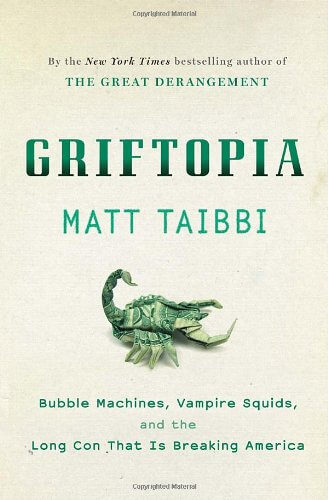
Boring Fundamentals: Boring is Fun
We go to incredible lengths to avoid actions that we know are good for us. For any endeavor, there are a set of basic skills needed to build a strong foundation. Even when we know they are good for us, even when we know they will advance our goals, we avoid taking the steps needed.
It really is just the boring fundamentals that make good things happen & if we can hack our brains into enjoying the boring fundamentals, then we’re well on our way to success (however we choose to define it).
Strong Foundation
We don’t do the boring fundamentals because, well, they’re boring. Repetitive actions done day after day are not a recipe for excitement. There’s a disconnect between the future positive result & the present slog. Progress often plateaus, & only arrives in unpredictable bursts.
My aim with this is not to yell until you eat your vegetables. You have your own set of goals. I want to help you achieve them in an efficient & fun way.
These are the hypothetical boring fundamentals:
- Sleeping 6-8 hours a night, exercising consistently, eating healthy
- Meditating, reading books, writing for yourself & for your peers
- Domain specific fundamentals, like drilling Johann Sebastian Bach's Brandenburg Concerto No. 3 First Movement ~ Abridged, or calculus
We gain the most useful skills in life only through consistency & practice. But the standard reasons for doing this work ~ “it’s good for you”, “you’ll have more energy” ~ aren’t enough. There is a better way to motivate ourselves. With the right mindset, with the right framing, we can learn to enjoy the boring fundamentals, & even find them fun.
Different Types of Fun
I used to think there was only one type of fun: pure hedonism. In my head everything else we do to survive ~ work, school, chores ~ was very clearly not fun. Ski enthusiast Tim Peck shows us that there are actually two types of fun:
- Type 1 Fun ~ Pure fun, untarnished by setbacks
- Type 2 Fun ~ Suffering now; fun after the fact, in retrospect
- Not Fun ~ Not fun now, not fun later, “I’m never doing that again”

We all know Type 1 fun. It’s an effortless night out with friends, a lazy day on the beach, the lucky spin at the roulette table. Everything goes to plan & all is right with the world. Type 1 fun is what most people think about if you mention the word fun. It’s great in the moment. Yet, too much Type 1 fun can lead to a sense of unease, of unfulfillment.
Type 2 fun is a sort of delayed fun. It’s the tough hike up a mountain, the push through writer’s block, the 20th mile of a marathon. It sucks in the moment.
Type 2 fun is the most satisfying type of fun, because it was accompanied by a challenge. There’s something wholesome & addicting about this type of fun. If you want to get good at boring fundamentals, Type 2 fun is the one to chase.
Unfortunately, we often expect an activity to be Not Fun. Not Fun is why people avoid the boring fundamentals. Not Fun looks suspiciously like Type 2 fun, so we avoid anything that might possibly involve suffering.
Anticipation & Reframing Fun
Author & blogger Tynan is not someone I would call boring. He bought a private island, wears Rolexes, & travels most of the year–often on cruises. You’d think the man was addicted to adventure seeking & Type 1 fun. Nope. Tynan enjoys, of all things, washing the dishes.
In Tiago Forte’s summary of “How Emotions are Made”, he demonstrates how our emotions are actually predictions:
- “I could appreciate the warm water on my hands & the shine in the pot when it was clean…it was so enjoyable that I actually found myself looking forward to washing the dishes the next day.”
- “On your way to the airport to pick up a friend you haven’t seen for years, your brain is busy predicting the feelings of joy & happiness you will soon be feeling. Which means you are already feeling happy before the event has occurred, & feel even happier when you actually see her.”
- “Your brain cannot help but constantly build predictive models of every experience you have, or any experience it thinks you might have.”

We too can reframe what we imagine as Not Fun into Type 2 fun. We can train ourselves to love the pain of Type 2 fun. By attaching a boring action with the anticipation of positive feelings, we can turn the uncomfortable grind into fun.
We don’t feel happy because we picked up our friend, we feel happy because we anticipated picking up our friend. We don’t feel annoyed because we’re doing the dishes, we feel annoyed because we anticipated the worst parts of doing the dishes. Through repeated exposure our brains create predictive models. We can use these predictive models as a powerful tool, reshaping the boring into fun.
When faced with the boring fundamentals, your brain’s predictive models will start to predict fun, instead of boredom. Boring is fun.
After the fact, you’ll remember the event fondly, no matter how painful it really was. Over time the memory of the grueling work disappears, & all that’s left is the joy of finishing. You feel a sense of accomplishment that’s deeply satisfying. You want to do it again.

Type 2 Fun ~ fun in retrospect ~ is real & worth looking for. With anticipation, we can reframe & make boring fundamentals fun! This is what I mean when I say I love boring fundamentals. I want you to experience this type of fun too.
“But any attempt to construct a narrative around all the former Goldmanites in influential positions quickly becomes an absurd & pointless exercise, like trying to make a list of everything. So what you need to know is the big picture: if America is circling the drain, Goldman Sachs found a way to be that drain ~ an extremely unfortunate loophole in the system of Western democratic capitalism, which never foresaw that in a society governed passively by free markets & free elections, organized greed always defeats disorganized democracy.” ~ Curated Excerpt From: Taibbi, Matt. “Griftopia: Bubble Machines, Vampire Squids, and the Long Con That Is Breaking America.” Apple Books.
Curated via James Stuber. Thanks for reading, cheers! (with a glass of wine & book of course)

2018 Vinium Cellars Napa Cabernet Sauvignon
Producer: Vinium Cellers, Estate Grown, Napa Valley, Napa County, North Coast, California, USA
"This is a dark, powerful wine, extracted from slowly & fully ripened fruit. On the nose the wine offers copious aromas of black cherry, blackberry, black licorice, raspberry with nicely integrated, lightly toasted & spicy oak aromas, & hints of vanilla. In the background there are hints of red pepper & spice, which elevate & balance the aromas of this wine. On the palate, the wine is bold & well-extracted. It bursts on to the palate with a deeply layered texture & medium grain tannins, followed by a lush mid-palate on long lingering finish." ~ Vinium Cellars Winery

Griftopia: Bubble Machines, Vampire Squids, and the Long Con That Is Breaking America
The dramatic story behind the most audacious power grab in American history The financial crisis that exploded in 2008 isn’t past but prologue. The stunning rise, fall, and rescue of Wall Street in the bubble-and-bailout era was the coming-out party for the network of looters who sit at the nexus of American political and economic power.
The grifter class ~ made up of the largest players in the financial industry and the politicians who do their bidding ~ has been growing in power for a generation, transferring wealth upward through increasingly complex financial mechanisms and political maneuvers. The crisis was only one terrifying manifestation of how they’ve hijacked America’s political and economic life.
Rolling Stone’s Matt Taibbi here unravels the whole fiendish story, digging beyond the headlines to get into the deeper roots and wider implications of the rise of the grifters. He traces the movement’s origins to the cult of Ayn Rand and her most influential ~ and possibly weirdest ~ acolyte, Alan Greenspan, and offers fresh reporting on the backroom deals that decided the winners and losers in the government bailouts.
He uncovers the hidden commodities bubble that transferred billions of dollars to Wall Street while creating food shortages around the world, and he shows how finance dominates politics, from the story of investment bankers auctioning off America’s infrastructure to an inside account of the high-stakes battle for health-care reform ~ a battle the true reformers lost.
Finally, he tells the story of Goldman Sachs, the “vampire squid wrapped around the face of humanity.” Taibbi has combined deep sources, trailblazing reportage, and provocative analysis to create the most lucid, emotionally galvanizing, and scathingly funny account yet written of the ongoing political and financial crisis in America.
This is essential reading for anyone who wants to understand the labyrinthine inner workings of politics and finance in this country, and the profound consequences for us all.

